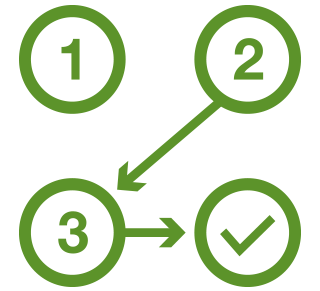Selecting an Applicant and Making an Offer

Making an Offer
It’s not unreasonable to ask candidates to attend a second interview (either by phone or in person), or an informal meeting if you are having trouble deciding who to employ. If you don’t feel that any of the candidates suit your needs, don’t simply employ ‘the best of a bad bunch’.
You might find you end up going through the recruiting process again for the same role sooner than you would like, which could cost you both time and money. Sometimes, it can be better not to employ anyone and fill the gap with casual staff until a more suitable applicant can be found.
After deciding on the appropriate person, it’s time to make an offer. Remember, it’s important that you do not make an offer of employment during the interview process.
Step 1 : Formal offer
You should send a formal offer of employment (see sample letter below) via post or email. With the letter of offer, you will need to include a copy of the Employment Contract and Position Description
To save time, you might want to call the candidate first to confirm that they are still interested in the position before sending the formal offer.
Step 2: Contact all applicants
Once your preferred candidate has accepted the job, all interviewed candidates should be contacted by phone and informed that they have been unsuccessful.
Step 3: Get the paperwork signed
Ensure that the successful candidate signs the letter of offer and a written contract before commencing work. This is important. If a contract is signed after the person has started working, it can later be argued that the some of the terms of the contract are invalid.
Refer to the Employment Contracts and Awards sections for further information on contracts and the conditions of employment.
Induction
Realistically, an employee can’t be expected to walk into a new job and be 100% effective from the first day – effectiveness grows with understanding of the farm and the details of its operation.
Overall, employees perform better and are more likely to stay in the job longer, when they are clear about what is expected of them from the beginning. This is one of the reasons it is important to make sure that all employees receive appropriate induction training.
- paperwork, such as completing an employee details form
- rosters, time sheets, and applying for Leave
- terms and conditions of employment – position description and employment contract
- farm policies and systems (see Safety for more information)
- a copy of The Fair Work Information Statement and The National Employment Standards Introduction (See Awards section for more information)
- OH&S procedures
- farm tour and general information
- introductions to farm staff (explaining their roles and responsibilities), contractors, suppliers, owners and management
- a walk-through of specific job tasks
- a copy of the farms Code of Conduct
Fair Work Information Statement 2009 - PDF
Introduction: National Employment Standards Fact Sheet - PDF
Code of Conduct template – Word Doc
Safety on farm - Contractor Checklist - Word Doc
Probationary period
When you hire someone new, it's best practice to have a 3 month probation period. During probation, new employees should be closely supervised, trained and assessed to see if they’re suitable for the job.
Written position descriptions are important here because they set guidelines and expectations and should be used as the basis of assessing performance.
A probation period doesn’t affect your employees’ entitlements including Leave or notice of Termination. Full and part-time employees who don’t pass their probation are entitled to at least one weeks’ notice of termination and accrued annual leave paid out.





